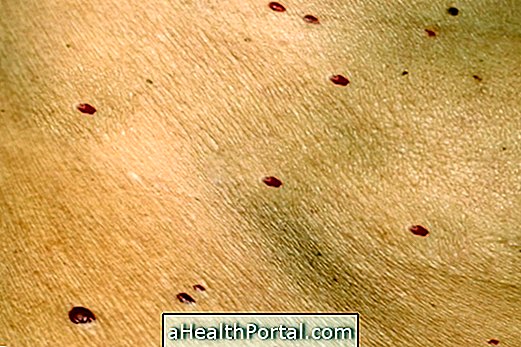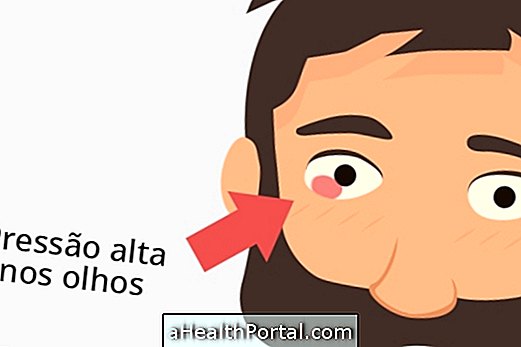Rubi angioma, also called senile angioma or nevus rubi, are red marbles that appear on the skin in adulthood and can increase in size and quantity with aging. It is quite frequent and poses no risk to health, however, if there is bleeding, you should seek a dermatologist for more accurate diagnosis.
Rubi angioma is a type of skin angioma, which usually occurs in places of poor visualization, such as scalp and back, but may also be present in the trunk and face, less frequently. It is the major skin disease of the elderly and shows no symptoms. Know what is angioma and major types.
The treatment is usually done for aesthetic purpose, it can be through laser or cryotherapy. The best way to prevent ruby angioma is to use sunscreen and avoid being exposed to the sun for too long so that there is no early aging of the skin, which favors the onset of angioma.

Main features
Rubi angioma initially presents as small, flat and red spots, but with aging, they can increase in size, reaching 5mm, and have a bright red color. These spots do not regress, that is, they can only be removed with some type of treatment, and have a slow evolution.
There are usually no symptoms, however in some cases there may be bleeding if there is a bump in the region where the angioma is located. In this case, it is important to go to the dermatologist for a new analysis of the red balls of the skin.
Causes of rubi angioma
It is not yet known what causes rubi angioma, but among the factors that may be related to its occurrence are skin aging, prolonged exposure to the sun and chemical compounds and stress. In addition, people who have diabetes are more likely to have rubi and more angioma.
How is the treatment done?
The treatment of rubi angioma usually is done with esthetic purpose and can be through:
- Laser, which promotes decreased blood flow in the vessel, eliminating the angioma;
- Cryotherapy, in which a liquid nitrogen spray is placed on the red spot;
- Electrocoagulation, an electric current is applied to the angioma;
- Sclerotherapy, which is a technique in which a substance is injected into the blood vessel to eliminate it. Learn more about sclerotherapy.
The treatment of rubi angioma depends on quantity and location, and may be located on the trunk or scalp. See how angioma treatment is done.
Home Treatment Options
Home treatment for rubi angioma can be done with castor oil or green apple juice. Castor oil is used to moisturize the skin and should be passed in the red spot once a day for 7 days. The green apple has antioxidant properties being able to slow the aging of the skin and thus prevent the progression of rubi angioma. Green apple juice should be passed in the angioma at least 3 times a day for 3 weeks.
To prevent red spots from appearing on the skin, it is important to use sunscreen, avoid being exposed to the sun for a long time, eat healthy and take cold water baths to improve circulation.























